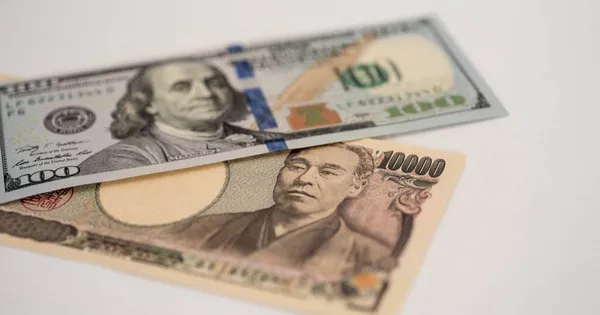During the Asian session on Monday, USD/JPY hit a new high since November 2022, but did not receive follow-up buying after rising slightly to the 148.00 level.
Markets maintained speculation that the Bank of Japan would intervene in foreign exchange markets to support the currency, coupled with a weaker risk tone, providing some support for the safe-haven Japanese yen (JPY). In fact, Japanese Finance Minister Shunichi Suzuki issued a new warning about the recent weakness of the yen and said that the government will not rule out introducing measures to deal with excessive currency market volatility. This therefore prevents the market from launching a new round of bullish bets on USD/JPY and acts as a headwind. However, the downside for USD/JPY remains limited due to the huge differences between the Federal Reserve and the Bank of Japan on their monetary policy stances.
As expected, the Fed decided to keep rates on hold after its September policy meeting last Wednesday but said it was prepared to raise rates until inflation returns to its 2% target. In fact, the Federal Reserve has warned that U.S. inflation remains unstable and that another rate hike of at least 25 basis points is likely before the end of the year. In addition, the Fed’s “dot plot” shows that the Fed will only launch two interest rate cuts next year, compared with the four previously expected. In addition, restorative growth in U.S. macro data should allow the Federal Reserve to maintain higher interest rates for a longer period of time. The Fed’s hawkish outlook has in turn pushed yields on rate-sensitive two-year U.S. government bonds to their highest levels since July 2006.
Elsewhere, the 10-year U.S. Treasury yield held steady near the 16-year peak hit on Friday. This in turn has helped the dollar stay just below its more than six-month peak and continues to provide support for USD/JPY. On the other hand, the Bank of Japan gave no signal on Friday that it might change its dovish stance in the foreseeable future, which put pressure on the yen. At a press conference after the meeting, Bank of Japan Governor Kazuo Ueda noted that the approach to the policy decision-making process had not changed and that the central bank did not yet foresee inflation reaching its 2% target in a stable manner. Therefore, the Bank of Japan will continue to maintain ultra-loose monetary policy.
The above fundamental backdrop seems firmly tilted in favor of USD/JPY bulls. Therefore, in the absence of important economic data due on Monday, USD/JPY consolidation pullbacks may still be viewed as buying opportunities, and these opportunities remain limited.


